








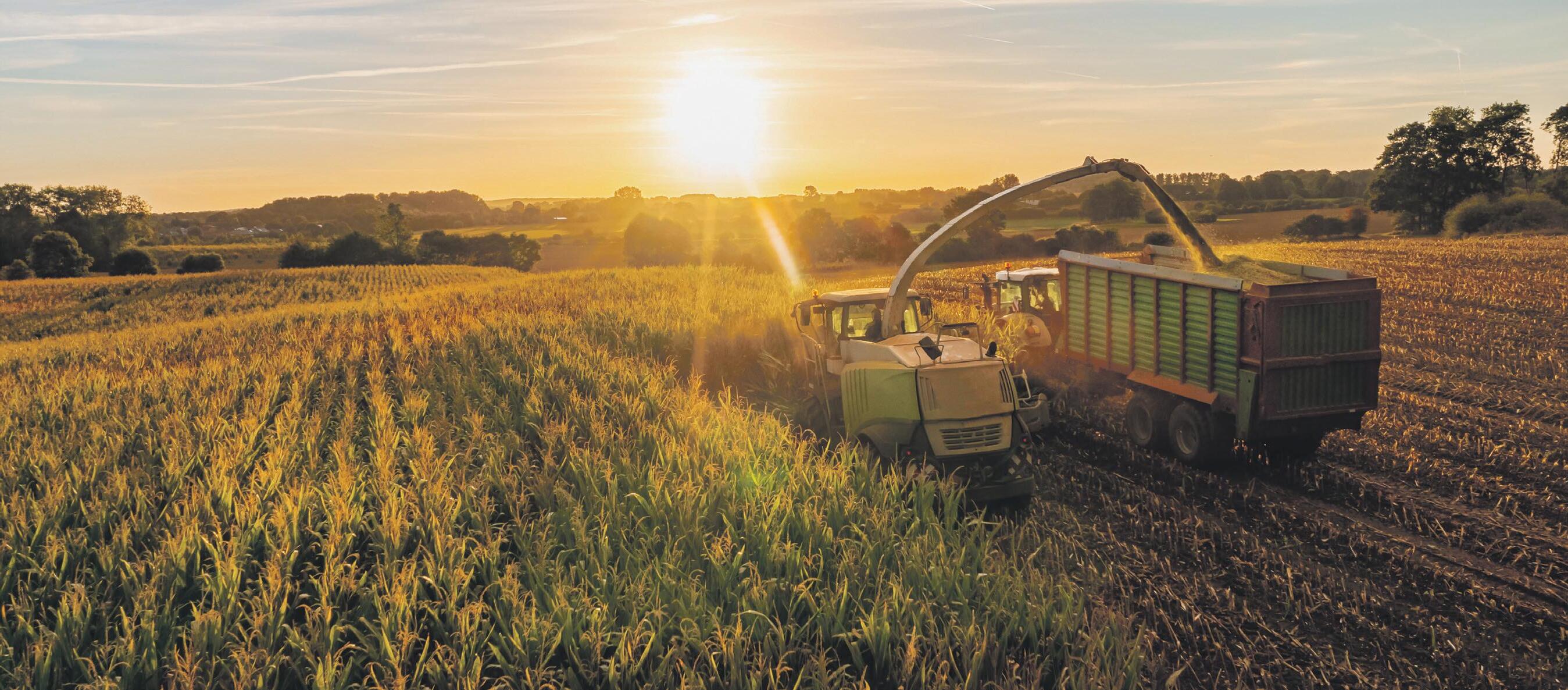
Low dairy payouts, declining lamb prices and uncertainty around contracts are facing farmers and their agricultural contractors as the maize and cropping season gets started, says Rural Contractors New Zealand vice president and Wairarapa ag contractor Clinton Carroll.
The Wairarapa is coming out of one of its wettest winters since records began, Clinton says.
“It remains very wet out there, with not a lot of groundwork being done yet.
“There will be a lot of damaged paddocks from the wet winter.
“With this last spell of ne weather things are looking a little more promising, but most farmers we have talked to say the conditions are still very wet.”
Clinton expects a lot of barley to be planted this season, along with a growing amount of wheat and peas, which have come back to the Wairarapa over the last couple of years.
As usual, he expects fodder crops to be widely planted including some vegetable seed crops.
Clinton recommends farmers have early talks to their merchants, and have good constant communication with their contractors.
“This will make things run smoothly and ensure the best results for the farmer.
“Have the paddocks fresh before spraying out, and look for any problem weeds as often there will be withholding periods for drilling and grazing.
“Understand that contractors are working hard, and doing their utmost to get to all of their clients on time.
“We are coming out of a very wet winter, so checking your paddocks are ready and dry enough will be very helpful.”
Near normal rainfalls are expected for the Wairarapa during early spring, according to NIWA in its Seasonal Climate Outlook August-October 2023.

“The developing El Niño is expected to result in a lower likelihood of tropical moisture plumes.
The DairyNZ-led Tararua Plantain Project, which focuses on improving water quality, won the team and collaboration award at this year’s Primary Industries New Zealand Awards.
The project supports local dairy farmers to understand and adopt the grazing herb plantain in their pastures, which helps improve water quality by reducing nitrogen leaching to waterways.
DairyNZ partners in the Tararua project with Agricom, MPI, Fonterra and Nestlé. Delivery partners include AgResearch, Horizons and Massey University. The work is part of broader dairy sector commitments, programmes and on-farm work to reduce footprint.
“This game-changing project has community at its heart, with dairy farmers, community members, iwi, DairyNZ and partners working together to reduce environmental footprint in the district,” says DairyNZ sustainable dairy general manager David Burger.
“The impact of the Tararua project as a
blueprint for farmers to take up plantain in catchments nationwide cannot be understated.
“Research shows Ecotain plantain in pastures can reduce nitrogen leaching from dairy farms by 20 to 60 percent. Plantain also has potential to reduce on-farm greenhouse gas emissions.”
So far through this project, 88 dairy farmers in the Tararua District now have plantain on their farms, and learnings are shared with other farmers.
“Farmers care about their local waterways and the Tararua Plantain Project also sees farmers monitor their own streams to understand ecosystem health and where to focus their environmental work,” says Dr Burger. Plantain use is predicted to lead to owon bene ts to national and regional economies, and to save farmers more than $1 billion per decade.
The Tararua Plantain Project helped inspire a national DairyNZ-led Plantain Potency and Practice Programme, with industry, government and farmers continuing to work together to research the e ects of plantain and support
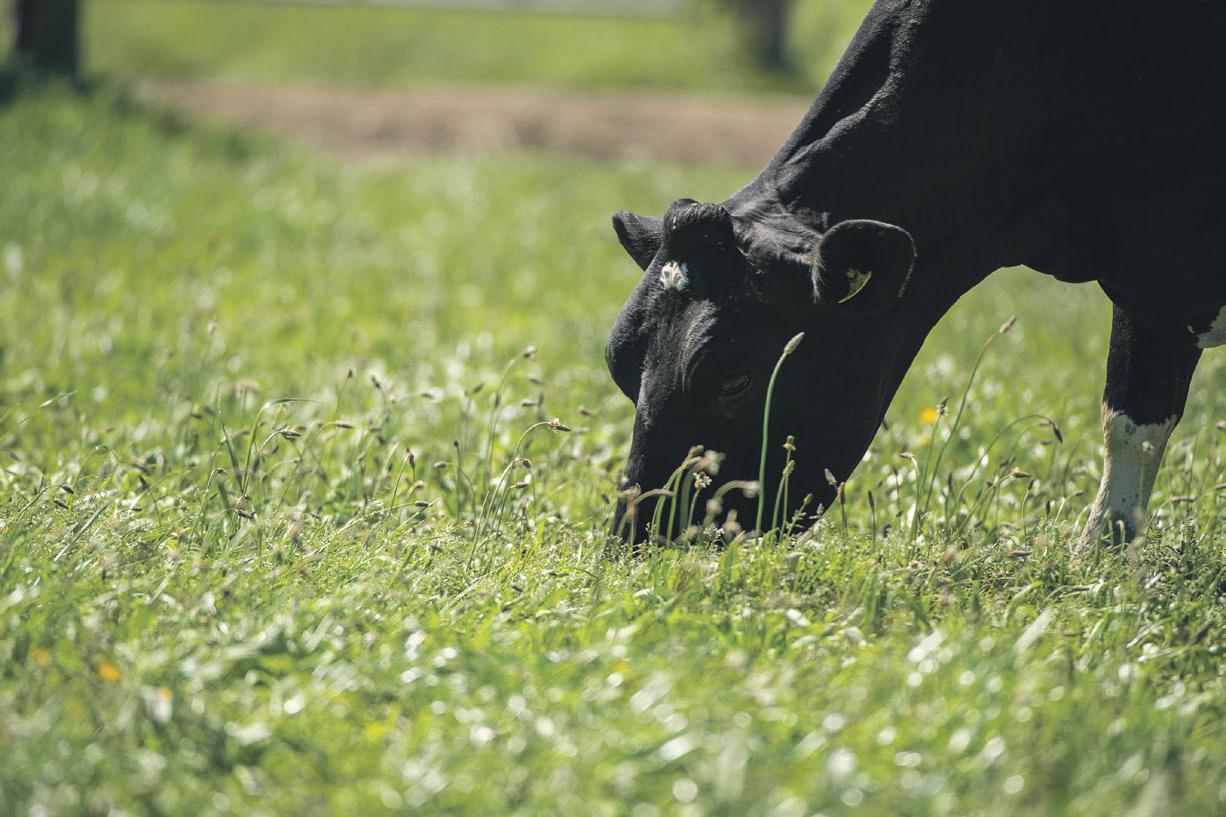
A dairy cow grazing the nutritious leafy herb plantain, proven to reduce nitrogen loss from dairy farms.
farmers to successfully adopt it on farms.
The national programme’s farm trial research at Massey University has shown that mixed pastures containing 3050% plantain can achieve reductions in nitrate leaching from dairy farms of 2060%, helping to reduce nitrogen losses to waterways.
The programme’s Lincoln University farm trial in Canterbury, on lighter soils under irrigation, shows similar trends. More data is being collected in both trials.
The programme will develop and tailor advice for farmers in other areas, including looking at the e ects of di erent soil and climate conditions.
TARARUA PLANTAIN
PROJECT HIGHLIGHTS
88 dairy farmers in the Tararua District have plantain on their farms
11 partner farmers have case studies and monitoring of plantain e ects carried out on their farms
24 project events held over 2021-23 to share project knowledge with farmers and the community
3,189 hectares plantain planted in mixed pastures. 104 hectares plantain crop
More than 560 monthly water quality monitoring samples taken by farmers across 21 sites

“Temperatures are most likely to be above average (60% chance).


“More frequent westerly winds may increase the chance for hot days in earlyto-mid spring.
“However, occasional easterly winds may still bring heavy rain from time to time. Seasonal wind speeds may be stronger than normal.


“Rainfall totals are about equally likely to be below normal (40% chance) or near normal (35% chance).
“Soil moisture levels are most likely to be below normal (45% chance) while river ows are about equally likely to be below normal (40% chance) or near normal (35% chance),” NIWA says.









season for maize was disastrous for some
For many North Island maize growers the 2022/23 season has been one to forget, and for some it has been a nancial disaster.
“Despite replanting two or three times, at the end some had nothing - and much higher costs than usual as well,” Blennerhassett said.
“It’s pretty devastating nancially for those people.”

The latest AIMI (Arable Industry Marketing Initiative) report estimates a 2023 maize grain harvest of 164,400 tonnes, which is 13% down on 2022, despite a 4% increase in harvest hectares. Yield was down 16%.
The situation may be even more grim,
Federated Farmers Arable Vice-President Maize Jamie Blennerhassett says, because as at the June 1 survey date some 37% of the crop was still unharvested. The 10-year average for completed crop harvest by the start of June is 79%.
“The very wet growing season means across the wider country it has been a bad season.
Maize grain crops in Northland, Bay of Plenty, the East Coast and right down to the Wairarapa are only at about 50% of long-term averages.
“The persistent rainfall and then the February cyclone meant for some, particularly in the eastern region between Napier and Gisborne, crops have been wiped out.
Maize silage crops fared better. The harvest, at an estimated 1,051,600 tonnes, was down 7% compared to 2022, with a lower yield (down 9%) from an increased harvest area (up 3%).
Almost all the harvest was in by June 1.
Most maize grain is sold for poultry and pig feed, with some going to dairy.
Blennerhassett said prices here are strongly linked to the cost of imported grain, and with the recent spike in world grain prices sparked by Russia’s attacks on shipments from the Ukraine, “if we get dragged into those impacts the poultry guys’ costs could rise”.
It’s unknown how much of the 37% of unharvested maize grain at the time of the June 1 AIMI survey has since been successfully brought in. The crop needs to be dried down for use and to keep the costs down of gas- red drying plant.
Blennerhassett said he was talking to one Gisborne grower at the Primary Industries NZ Summit in early July and he still hadn’t been able to get any of his crop in because of wet conditions.
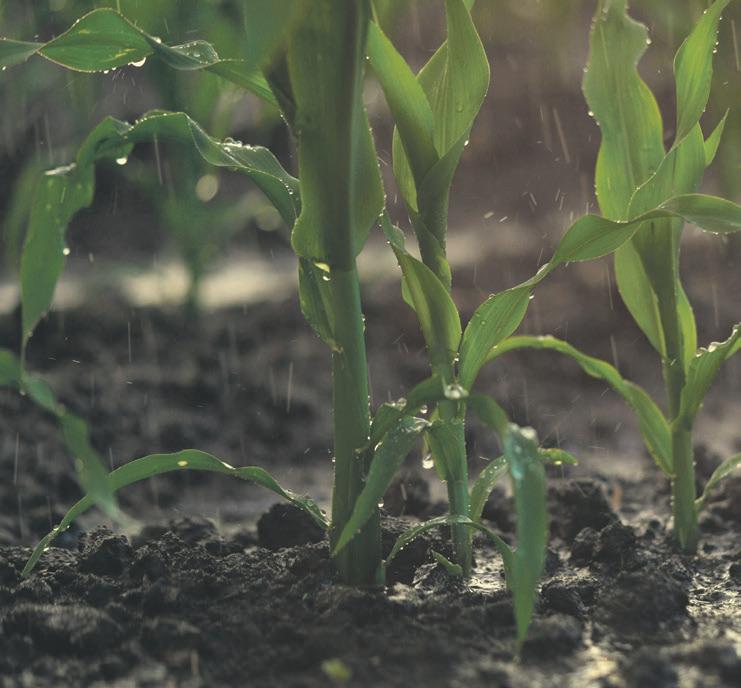
Maize grain crops in the Wairarapa were half of long-term averages.
A very poor season like this dents con dence. The AIMI report said maize grain spring sowing intentions (hectares) were 12% down on 2022 and for maize silage 3% down.
“The seed reps are saying there appears to be lower intentions to plant.
“A lot of the hectares in maize is land leased on year-to-year rollover and in some cases the banks will draw a line on nance given the disastrous season some have su ered,” Blennerhassett said.
“We traditionally have a south-westerly wind ow in New Zealand but with the La Niña phase we’ve been under, it’s been the exact opposite, hence the heavy rainfall.
“We’re due to go back to an El Niño pattern but weather patterns have been so skew-whi It make it so di cult for growers to plan.”

Plan early for stock class, animal welfare, access, biosecurity, and the use of catch crops – use a feed budget to work out appropriate crop type and area of crop.
Record what you are doing and where. Make sure you share it with sta contractors and anyone involved in winter grazing. This may be required as part of your compliance obligations with the Regional Council.
Look after your stock – provide adequate feed, shelter, fresh clean water, and dry areas for suitable for resting and loa ng.
Have a plan for adverse weather events such as a safe area to move stock to if heavy rain or snow is forecast.
Minimise excessive disturbance of wet soil by animals & machinery.
Steeper paddocks come with greater risks; do you really need to crop certain paddocks or the entire paddock?
Soil type can determine the suitability of a paddock as well as impact productivity, nutrient loss and animal welfare.

Consider proximity to waterways and gullies, as well as ood risks.
The greater the risk of soil, phosphorus, or nitrogen loss, the smaller the animal you should be grazing on the paddock or the lower the stocking rate for heavier animals.
Keep stock out of waterways and Critical Source Areas.
Leave ungrazed bu er zones around Critical Source Areas.
Graze from the top down in sloping paddocks, and from the opposite end of a paddock to a waterway if present.
Use long and narrow breaks, particularly with cattle.
Back-fence to protect soils while allowing animals access to shelter in adverse weather events.
Allow soils time to dry su ciently before cultivating.
Use a catch-crop where possible and practical, to reduce nutrient loss, minimise bare soil and increase feed production.
Source: Forage Cropping Management, bee ambnz.com
If you’re planning on growing a summer crop or two, now is the time to think about paddock selection and preparation.
Due to the recent wet weather, cultivation and planting are likely to be delayed, with paddocks too wet for the tractor. It’s important to allow soils time to dry out before cultivating, remembering that heavier soils take longer to dry, especially if it’s cold and damp.
If soils are cultivated when they are too wet, this can cause long-term soil damage by breaking down soil structure. The secret is to retain enough soil moisture to allow for good seed germination and growth.
Have you soil tested the paddocks you plan to sow? Testing will tell you whether soil nutrient levels are high enough to deliver optimal plant growth. It will also alert you to any de ciencies, excesses or imbalances of major nutrients, as well as enabling you to track fertility trends over time.
And, of course, a soil test will inform your fertiliser
recommendations, helping your fertiliser dollar go further. Your local fertiliser rep can carry out a soil test for you, or you can do it yourself, if you have a soil auger.
Here are some soil testing tips:
1 Don’t test within three months of applying fertiliser or lime.
2 Take samples by walking in a random or zig zag pattern across the paddock.
3 Don’t sample in dung or urine patches, or stock camping areas, such as around troughs or under trees.
4 Put each sample in a clear snap lock bag and label clearly.
5 Deliver your samples to the lab immediately or store in the fridge until you can get to the lab. Delays expose samples to excess heat and moisture and can a ect the analysis.


Beef + Lamb New Zealand’s Knowledge Hub has resources on soil characteristics, fertiliser use and crop establishment. Visit www.knowledgehub.co.nz







Wintering well starts with planning


Good record keeping is good management practiceBy Justin Kitto, DairyNZ solutions and
development manager
Re ecting on the past ve years, farmers should be proud of the work they have done to improve wintering practices.
We have come a long way and are getting recognition from councils and government about positive changes that support the welfare of animals and the environment.
Talking to farmers across New Zealand for DairyNZ’s Winter Grazing Survey con rmed there is steady progress in wintering practices. Some big wins include:
95% of respondents with water in or beside their crop paddocks had a riparian bu er with an average width of 9m.
There are numerous good reasons for keeping crop management records, these include:
Environmental reporting - all Fonterra suppliers are required to complete nutrient budgets and your maize silage crop should be done as a separate block.
Financial reporting - a ‘Cost of Production’ worksheet can assist you to calculate the cost of growing your crop.
Diagnosis - if something goes wrong with your crop.
Repeat Results - when you grow a fantastic crop, you will know what was done so you can to do it again!
You may rely on others (e.g. technical advisors or a contractor) for some or all
84% of respondents had a written wintering plan.
70% of respondents change grazing direction, often to avoid high risk situations.
Having such high proportions of respondents carrying out these actions shows many farmers are focused on doing the best over winter.
To keep up this momentum, now is a good time to be considering your set up for next winter.
Successful wintering starts with choosing suitable paddocks in spring, well ahead of winter. Many farmers
of your crop management.
However, you should still make sure you have copies of crop management records. These will be useful if your advisor changes, or you change to another company or contractor.
Laboratory tests - Copies of any soil, plant and e uent analyses including when, where and how the samples were collected and by whom.
Cultivation - When, how, who and any notable soil conditions (eg a bit dry, too wet).
Herbicides - For each application record; when, the product(s) used,

avoid paddocks with waterways in or adjacent to crop, with almost all farmers having stock excluded and bu ers wider than the minimum standard.
Considering the whole picture when choosing paddocks is also important. Our results showed 65% of paddocks were selected based on pasture renewal, while only 20% were based on risk criteria. Having a broader picture is important as it is more likely low-risk areas will be selected, than being focused on pasture renewal alone. Factors to consider include paddock slope, critical source areas, and waterways and ood risk.
A great place to start when selecting paddocks is re ecting on this past
chemical and water rate, who sprayed, and weather conditions during application (especially wind direction and speed).
Nutrient inputs for all fertiliser, lime, e uent or other nutrient inputs (e.g. chook manure), make sure you record when, where and how it was applied, the rate and nutrient content of the product, and who applied it.
Crop details - the hybrid, sowing time, plant population and any seed treatment used.
Other inputs - keep records of application rate and timing of other inputs such as; insecticides, irrigation etc.
Crop monitoring records - your crop should be regularly checked for; weed, pest and disease pressure,
season and looking at paddock history.
Consider:
Did your chosen paddocks hold up well?
Would you choose the same paddocks again?
Would you do something di erent based on what you have seen?
These questions can help shape your paddock selection and winter planning, helping identify low-risk paddocks.
During cold, wet and windy conditions, cows can experience discomfort. Where possible, plant crop in paddocks with good shelter.
Alternatively, allow a feed bu er in your
establishment and harvest maturity.
Those irrigating may monitor soil moisture and rainfall. Keep records of all crop, soil and weather monitoring.
Harvest
Record the harvest date(s). If you are not weighing your crop, ask your technical advisor and/or contractor for their best estimate of crop yield and DM%. On completion stacks can be easily sampled for analysis of DM% or feed quality.
This is done regularly for traded maize. Your harvesting contractor should be able to arrange this.
Source: Foundation For Arable Research, Best Management Practices for Growing Maize on Dairy Farms www.far.org.nz/ articles/159/best-management-practices-for-growing-maizeon-dairy-farms
budget to account for feeding extra on cold, wet or windy days, and note this in your wintering plan.
Contractors are an essential part of successful wintering set up, but working with them and e ectively communicating helps avoid issues arising.
If you use a contractor for spraying and establishing crop, contractors nd it helpful to be told which parts of paddocks to avoid.
Programmes like Tracmap can be used to identify exclusion zones, or put-up temporary fencing around areas where


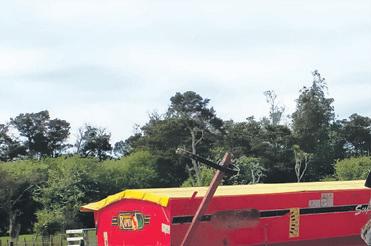
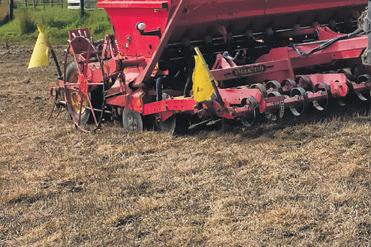
crop should not be established. Another alternative is to provide a hand drawn map.
Getting everyone on the same page, along with making a few key decisions around paddock selection, will help set you up to winter well in 2024.
For more information and tips visit dairynz.co.nz/wintering

Successful wintering starts with choosing suitable paddocks in spring,



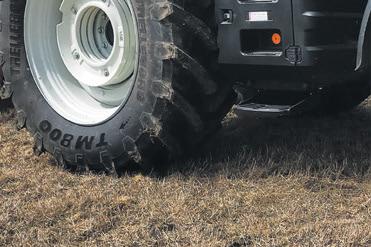










Minimises
























